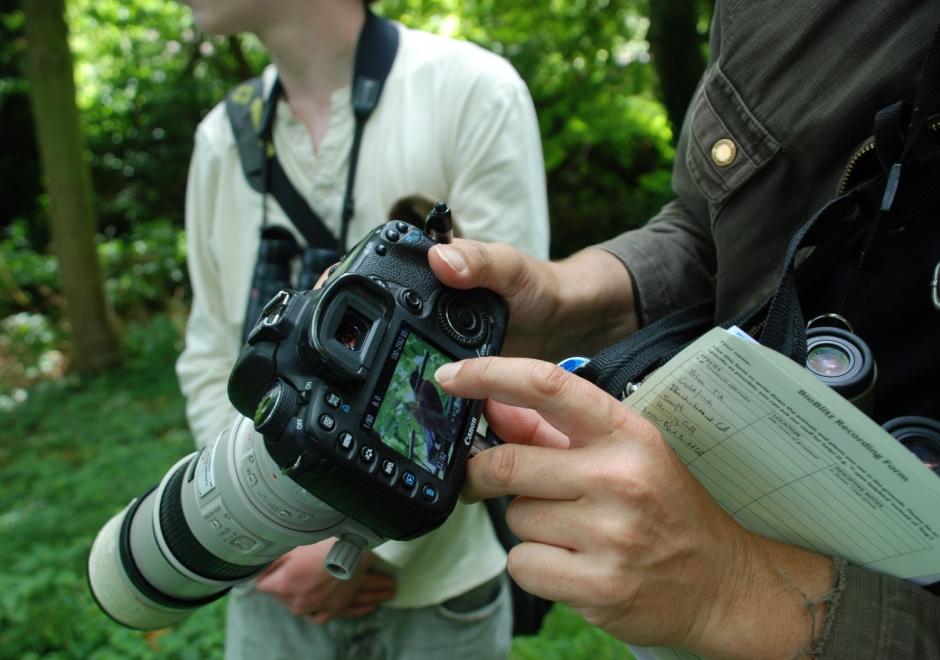GS-24 - Citizen Science with GIS&T

Figure 1. Participant in a BioBlitz records bird observation (Source: Jo Somerfield)
Citizen Science is defined as the participation of non-professional volunteers in scientific projects (Dickson et al, 2010) and has experienced rapid growth over the past decade. The projects that are emerging in this area range from contributory projects, co-created projects, collegiate projects, which are initiated and run by a group of people with shared interest, without any involvement of professional scientists.
In many citizen science projects, GIS&T is enabling the collection, analysis, and visualisation of spatial data to affect decision-making. Some examples may include:
- Recording the location of invasive species or participating in a BioBlitz to record local biodiversity (Figure 1).
- Measuring air quality or noise over a large area and over time to monitor local conditions and address them
- Using tools to educate on and increase access to local resources, improving community resilience
Such projects have the opportunity to empower or disempower members of the public, depending upon access to and understanding of technology. Citizen Science projects using GIS&T may help communities influence decision makers and support the gathering of large-scale scientific evidence on a range of issues. This may also renew people’s interests in the sciences and foster continued and lifelong learning.


DA-31 - GIS&T and Libraries, Archives, and Museums
Libraries, archives, and museums (LAMs) are an important part of the GIS&T ecosystem and they engage in numerous activities that are critical for students, researchers, and practitioners. Traditionally these organizations have been at the forefront of developing infrastructures and services that connect researchers and others to historical and contemporary GIS data, including print maps. More recently, as a result of greater interest in spatial thinking and research, these organizations and institutions have become a place for instruction, outreach, and practice. This entry will discuss the historical role that LAMs have played in supporting and developing GIS&T as well as focus on current trends.